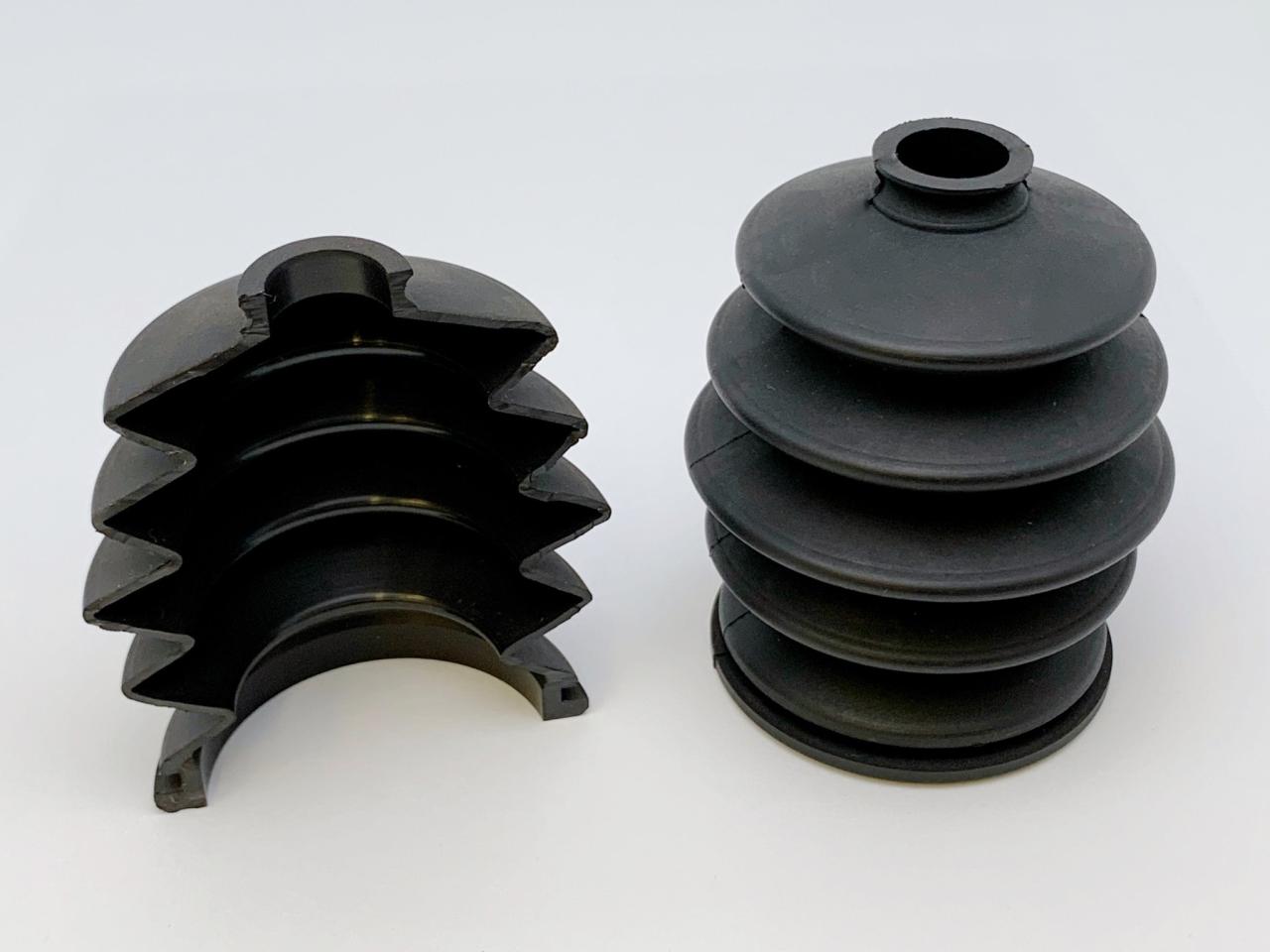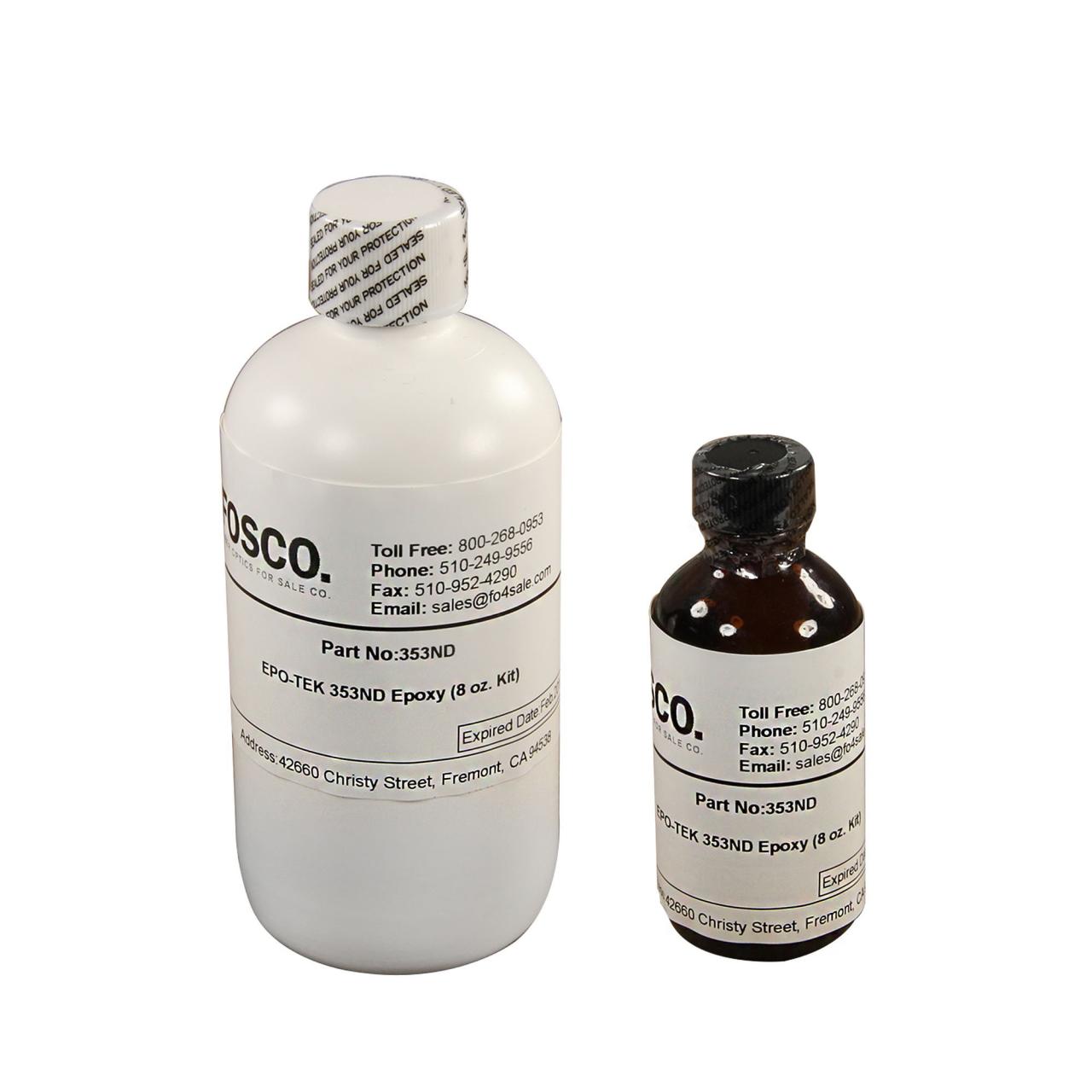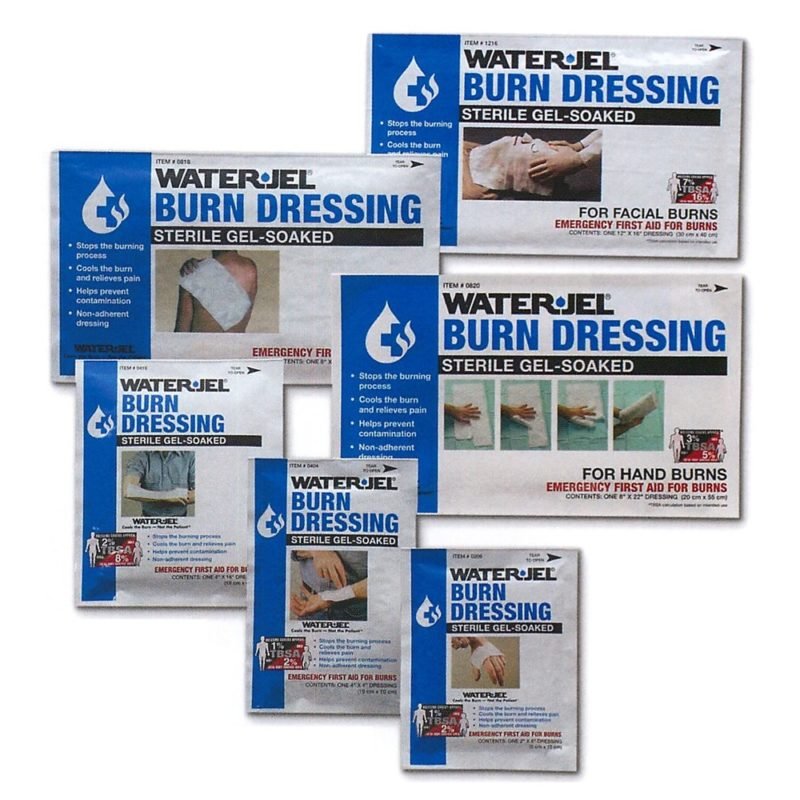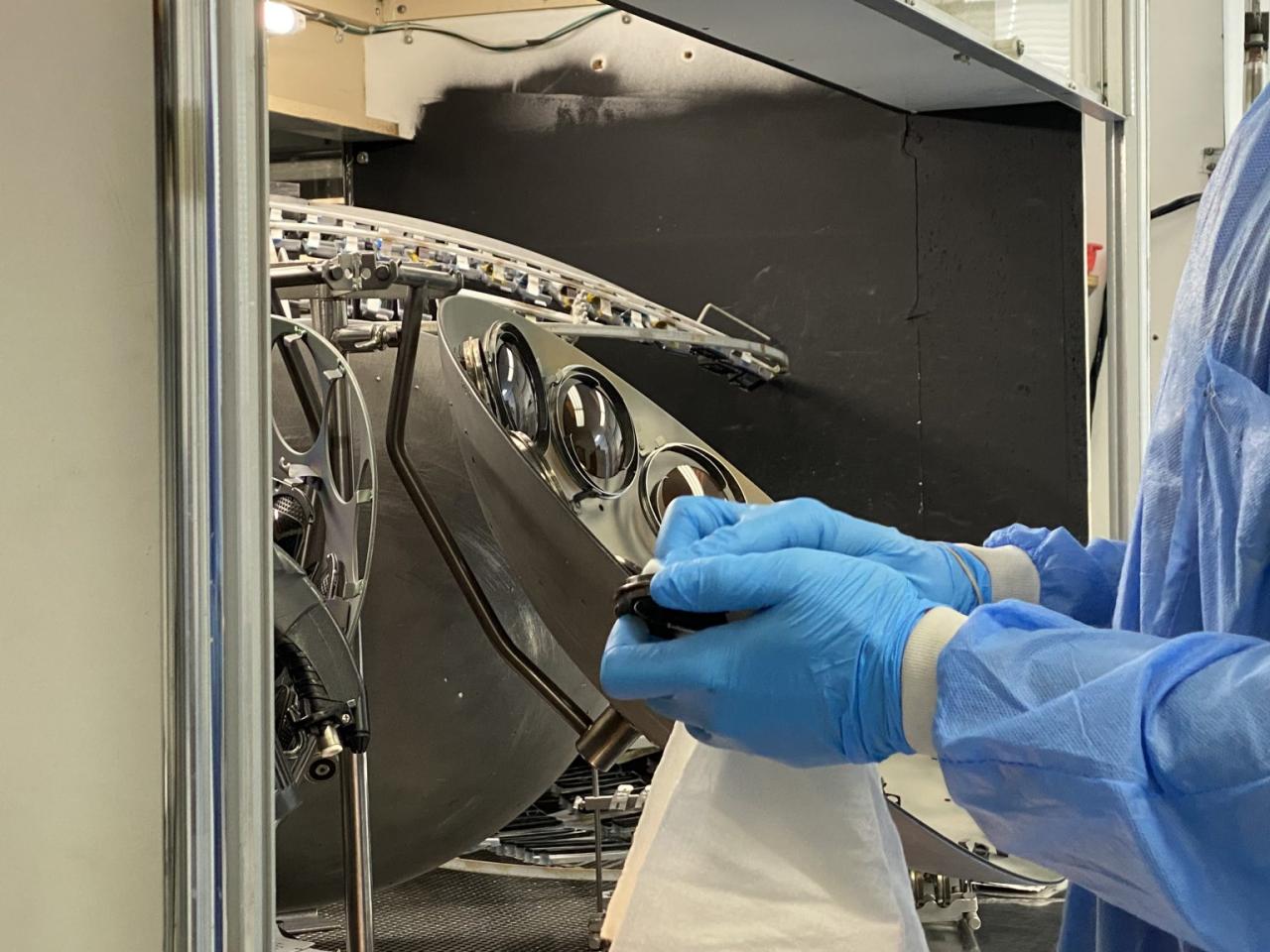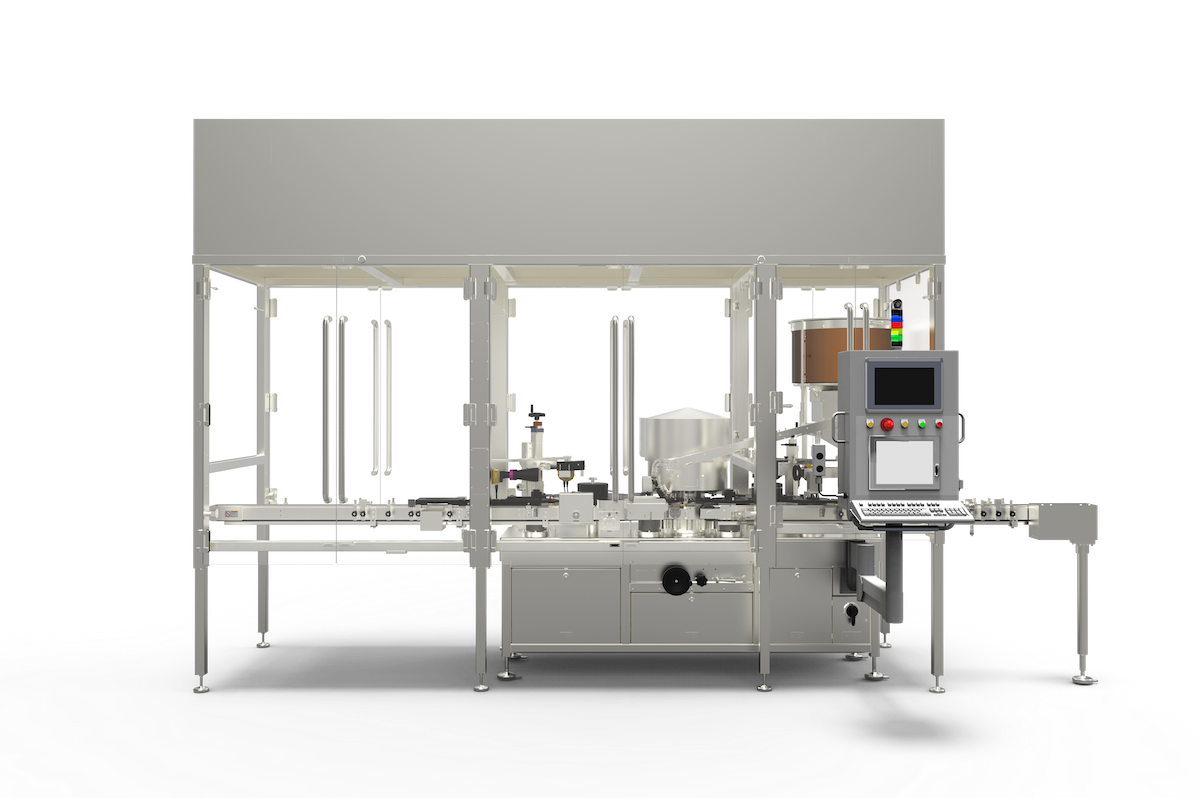Epoxy Technology: A Comprehensive Overview
Epoxy technology has revolutionized numerous industries, from construction and electronics to aerospace and medicine. These versatile materials, known for their exceptional strength, durability, and adaptability, have become indispensable in modern […]

Epoxy technology has revolutionized numerous industries, from construction and electronics to aerospace and medicine. These versatile materials, known for their exceptional strength, durability, and adaptability, have become indispensable in modern manufacturing and engineering.
Epoxy resins, the heart of this technology, are synthetic polymers that undergo a chemical reaction with a curing agent to form a rigid, thermosetting plastic. This process, known as curing, transforms the liquid resin into a solid material with remarkable properties. The unique characteristics of epoxy resins, such as their high adhesion, chemical resistance, and versatility in formulation, have propelled their widespread use in various applications.
Introduction to Epoxy Technology
Epoxy technology is a versatile and essential field that encompasses the synthesis, properties, and applications of epoxy resins. These resins are known for their exceptional adhesive, structural, and chemical resistance properties, making them indispensable in various industries.
Epoxy Resins: Definition and Properties
Epoxy resins are thermosetting polymers that undergo a chemical reaction with a curing agent to form a rigid, cross-linked network structure. They are typically composed of an epoxide group, which is a three-membered ring containing an oxygen atom and two carbon atoms.
This unique structure provides epoxy resins with several desirable properties:
- Excellent adhesion: Epoxy resins form strong bonds with a wide range of materials, including metals, plastics, ceramics, and wood. This characteristic makes them ideal for adhesives, coatings, and composites.
- High mechanical strength: The cross-linked network structure of cured epoxy resins provides exceptional tensile strength, flexural strength, and impact resistance. This makes them suitable for structural applications such as aerospace components and construction materials.
- Chemical resistance: Epoxy resins are resistant to a wide range of chemicals, including solvents, acids, and bases. This property makes them ideal for use in harsh environments and applications requiring corrosion resistance.
- Electrical insulation: Epoxy resins are excellent electrical insulators, making them suitable for applications in electrical components, printed circuit boards, and other electronic devices.
- Thermal stability: Epoxy resins exhibit good thermal stability, meaning they can withstand high temperatures without degrading significantly. This property makes them suitable for use in high-temperature applications.
History and Evolution of Epoxy Technology
The history of epoxy technology dates back to the early 20th century.
- 1907: The first synthetic epoxy resin was discovered by Dr. Pierre Castan in Switzerland. He accidentally produced a resin by reacting epichlorohydrin with bisphenol A.
- 1930s: Further research led to the development of commercially viable epoxy resins, paving the way for their widespread use in various applications.
- 1940s: The development of epoxy adhesives during World War II accelerated the adoption of epoxy technology. The need for strong and durable adhesives for aircraft and other military equipment led to significant advancements in this field.
- 1950s-Present: Since then, epoxy technology has continued to evolve, with advancements in resin formulations, curing agents, and processing techniques. Today, epoxy resins are used in a wide range of applications, from aerospace and automotive to construction and electronics.
Importance of Epoxy Technology in Various Industries
Epoxy technology plays a vital role in various industries, including:
- Aerospace: Epoxy resins are used in aircraft components, such as fuselages, wings, and tail sections, due to their high strength-to-weight ratio and excellent adhesion properties.
- Automotive: Epoxy resins are used in automotive parts, such as bumpers, body panels, and underbody coatings, for their impact resistance, durability, and corrosion resistance.
- Construction: Epoxy resins are used in concrete floors, countertops, and adhesives for their strength, durability, and resistance to chemicals and moisture.
- Electronics: Epoxy resins are used in printed circuit boards, encapsulants, and potting compounds for their electrical insulation, thermal stability, and resistance to moisture and chemicals.
- Marine: Epoxy resins are used in boat hulls, decks, and other marine structures for their strength, durability, and resistance to water and saltwater corrosion.
Chemistry and Composition of Epoxy Resins

Epoxy resins are thermosetting polymers that undergo a chemical reaction with a curing agent to form a rigid, cross-linked network. They are known for their exceptional mechanical strength, adhesion, chemical resistance, and durability, making them widely used in various applications.
Basic Chemical Structure
The fundamental building block of an epoxy resin is the epoxy group, which is a three-membered ring containing an oxygen atom and two carbon atoms. This ring structure is highly reactive and provides the foundation for the resin’s curing process. Epoxy resins typically consist of a bisphenol-A (BPA) backbone, a di- or tri-functional molecule, with epoxy groups attached to the ends of the molecule.
Types of Epoxy Resins
There are various types of epoxy resins, each with unique characteristics that influence their properties and applications.
Epoxy Resins Based on Bisphenol-A
Bisphenol-A (BPA)-based epoxy resins are the most common type and are widely used in structural adhesives, coatings, and composites. They are known for their good mechanical strength, adhesion, and chemical resistance.
Epoxy Resins Based on Novolac
Novolac epoxy resins are formed by reacting phenol with formaldehyde. They have a higher melting point and better thermal stability compared to BPA-based resins. These resins are commonly used in high-temperature applications and electronics.
Epoxy Resins Based on Cycloaliphatic
Cycloaliphatic epoxy resins are characterized by their excellent resistance to ultraviolet (UV) radiation and weathering. They are often used in outdoor applications and coatings.
Epoxy Resins Based on Glycidyl Methacrylate (GMA)
GMA-based epoxy resins are known for their excellent adhesion to various substrates, including metals, plastics, and composites. They are often used in adhesives and coatings.
Epoxy Resins Based on Aliphatic
Aliphatic epoxy resins are characterized by their flexibility and low viscosity. They are commonly used in coatings and sealants.
Hardeners and Curing Agents
Hardeners, also known as curing agents, are essential components of epoxy formulations. They react with the epoxy groups in the resin to form a cross-linked network, converting the liquid resin into a solid, cured product.
Amines
Amines are the most common type of hardeners used with epoxy resins. They react with the epoxy groups through a nucleophilic attack, opening the epoxy ring and forming a cross-linked network.
Anhydrides
Anhydrides are another type of hardener that react with epoxy groups through a ring-opening reaction. They are often used in high-performance applications, as they can produce resins with excellent thermal stability and chemical resistance.
Polyamides
Polyamides are used as hardeners for epoxy resins. They are known for their versatility and ability to cure at room temperature.
Phenolic Resins
Phenolic resins are used as hardeners for epoxy resins. They are known for their good adhesion and chemical resistance.
Other Curing Agents
Other curing agents include polyamines, polyamides, and acid anhydrides. These agents react with the epoxy groups to form a cross-linked network, resulting in a cured epoxy product.
The selection of the appropriate hardener depends on the desired properties of the final epoxy product, such as cure speed, mechanical strength, and chemical resistance.
Epoxy Applications
Epoxy resins are versatile materials with a wide range of applications across various industries. Their exceptional adhesion, chemical resistance, and mechanical strength make them ideal for diverse uses, from construction and electronics to aerospace and medical fields.
Epoxy Applications in Construction and Building Materials
Epoxy resins are widely used in construction and building materials due to their durability, strength, and resistance to moisture and chemicals.
| Application | Epoxy Type | Advantages | Examples |
|---|---|---|---|
| Flooring | Epoxy floor coatings | High durability, abrasion resistance, easy to clean | Epoxy coatings for industrial floors, garages, and warehouses |
| Adhesives | Structural epoxy adhesives | Strong bonding, high shear strength, moisture resistance | Adhesives for wood, metal, and concrete structures |
| Concrete Repair | Epoxy injection resins | Crack sealing, structural reinforcement, water resistance | Repairing cracks and voids in concrete structures |
| Grouting | Epoxy grouts | High strength, chemical resistance, watertight seal | Grouting for tiles, stone, and other building materials |
Epoxy Applications in Electronics and Electrical Insulation
Epoxy resins are crucial in electronics and electrical insulation due to their excellent dielectric properties, thermal stability, and resistance to chemicals and moisture.
- Epoxy resins are used as encapsulants for electronic components, protecting them from environmental factors and mechanical stress.
- They serve as insulating materials in printed circuit boards (PCBs), providing electrical isolation between components.
- Epoxy resins are also used in the manufacture of transformers, motors, and generators, providing electrical insulation and mechanical support.
Epoxy Applications in Aerospace and Automotive Industries
Epoxy resins are essential in aerospace and automotive industries due to their high strength-to-weight ratio, excellent adhesion, and resistance to extreme temperatures and chemicals.
- Epoxy composites are used in aircraft structures, such as wings, fuselages, and tail sections, providing lightweight and durable components.
- Epoxy adhesives are used in the assembly of aircraft and automotive components, ensuring strong and reliable bonds.
- Epoxy coatings are used on aircraft and automotive surfaces to provide protection against corrosion, weathering, and abrasion.
Epoxy Applications in Medical and Dental Applications
Epoxy resins are used in medical and dental applications due to their biocompatibility, chemical resistance, and excellent bonding properties.
- Epoxy resins are used in dental composites, providing tooth-colored restorations that are strong and durable.
- They are also used in orthopedic implants, providing a strong and biocompatible interface between the implant and bone.
- Epoxy resins are used in medical devices, such as catheters, syringes, and surgical instruments, providing strength and durability.
Epoxy Manufacturing Processes: Epoxy Technology
Epoxy resins are produced through a series of chemical reactions that involve the synthesis of monomers and their subsequent polymerization. The manufacturing process can be broadly divided into two main stages: the production of epoxy monomers and the formulation of epoxy resins.
Epoxy Monomer Production
Epoxy monomers are the building blocks of epoxy resins. Their production typically involves a multi-step process that begins with the synthesis of bisphenol A, a key ingredient in many epoxy formulations. The steps involved in the production of epoxy monomers are:
- Bisphenol A Synthesis: Bisphenol A is produced by reacting phenol with acetone in the presence of an acid catalyst. This reaction is typically carried out at high temperatures and pressures.
- Epichlorohydrin Synthesis: Epichlorohydrin is produced by reacting allyl chloride with hypochlorous acid. This reaction is also carried out at high temperatures and pressures.
- Epoxy Monomer Synthesis: Bisphenol A and epichlorohydrin are then reacted in the presence of a base catalyst to form the epoxy monomer. This reaction is typically carried out in a solvent, such as acetone or methanol.
Epoxy Resin Formulation
Epoxy resins are formulated by mixing epoxy monomers with other ingredients, such as curing agents, fillers, and additives. The specific formulation will depend on the desired properties of the final epoxy product. The steps involved in the formulation of epoxy resins are:
- Mixing: The epoxy monomer is mixed with the other ingredients in a carefully controlled process. This step is critical to ensure that the final product has the desired properties.
- Curing: The epoxy mixture is then cured by adding a curing agent. The curing agent reacts with the epoxy monomer to form a cross-linked polymer network. This process is typically carried out at elevated temperatures and can take several hours or even days to complete.
- Quality Control: The final epoxy product is subjected to a series of quality control tests to ensure that it meets the required specifications. These tests may include measurements of viscosity, density, and mechanical properties.
Quality Control Measures
Quality control measures are essential throughout the epoxy manufacturing process to ensure that the final product meets the required specifications. These measures include:
- Raw Material Inspection: The quality of the raw materials used in the production of epoxy resins is critical to the final product. Raw materials are inspected for purity, consistency, and adherence to specifications. This includes testing for the presence of impurities, such as water, that can negatively affect the properties of the epoxy resin.
- Process Monitoring: The manufacturing process is closely monitored to ensure that it is carried out under controlled conditions. This includes monitoring temperature, pressure, and reaction time. Deviation from these parameters can affect the quality of the final product.
- Product Testing: The final epoxy product is subjected to a series of quality control tests to ensure that it meets the required specifications. These tests may include measurements of viscosity, density, tensile strength, flexural strength, and impact resistance.
- Documentation: All aspects of the epoxy manufacturing process are documented, including the raw materials used, the process parameters, and the results of quality control tests. This documentation is essential for traceability and troubleshooting purposes.
Advances in Epoxy Technology
The field of epoxy technology is constantly evolving, driven by the need for improved performance, sustainability, and cost-effectiveness. Recent advancements have focused on developing new epoxy resins with enhanced properties, utilizing nanotechnology to improve performance, and integrating sustainable and bio-based materials in epoxy formulations.
Development of New Epoxy Resins
The development of new epoxy resins with improved properties has been a major focus of research in recent years. These advancements have resulted in epoxy resins with enhanced mechanical strength, thermal stability, and chemical resistance, opening up new possibilities for applications in various industries.
- High-Performance Epoxy Resins: These resins are designed for demanding applications, such as aerospace, automotive, and construction. They exhibit exceptional strength, stiffness, and resistance to high temperatures and harsh environments. Examples include:
- Epoxy-Toughened Resins: These resins incorporate toughening agents, such as rubber particles, to improve their impact resistance and fracture toughness. This makes them suitable for applications where impact resistance is critical, like aerospace components and wind turbine blades.
- High-Temperature Epoxy Resins: These resins can withstand elevated temperatures without degrading, making them ideal for applications in aerospace, electronics, and automotive industries. Examples include epoxy resins based on aromatic amines and cycloaliphatic epoxies, which exhibit excellent thermal stability and high glass transition temperatures.
- Bio-Based Epoxy Resins: These resins are derived from renewable resources, such as plant oils and sugars. The use of bio-based materials in epoxy formulations reduces reliance on fossil fuels and contributes to a more sustainable future. Examples include:
- Soy-Based Epoxy Resins: These resins are derived from soybean oil and offer good adhesion, flexibility, and durability. They are used in various applications, including coatings, adhesives, and composites.
- Epoxy Resins from Renewable Sources: Research is ongoing to develop epoxy resins from other renewable sources, such as lignin, a by-product of paper production, and furfuryl alcohol, a bio-based chemical derived from agricultural waste. These developments hold the potential to create fully bio-based epoxy systems with reduced environmental impact.
Nanotechnology in Epoxy Composites
Nanotechnology has emerged as a powerful tool for enhancing the properties of epoxy composites. By incorporating nanomaterials into epoxy formulations, researchers have achieved significant improvements in mechanical strength, thermal stability, and electrical conductivity.
- Carbon Nanotubes (CNTs): CNTs are cylindrical structures of carbon atoms with exceptional strength, stiffness, and electrical conductivity. Their incorporation into epoxy composites can significantly enhance the mechanical properties, thermal conductivity, and electrical conductivity of the material.
CNTs can improve the tensile strength and modulus of epoxy composites by up to 50% and 100%, respectively.
- Graphene: Graphene is a single layer of carbon atoms arranged in a honeycomb lattice. It exhibits exceptional mechanical strength, electrical conductivity, and thermal conductivity. The addition of graphene to epoxy composites can enhance the mechanical, electrical, and thermal properties of the material.
Graphene can increase the tensile strength and modulus of epoxy composites by up to 30% and 50%, respectively.
- Clay Nanomaterials: Clay nanomaterials, such as montmorillonite, can be incorporated into epoxy composites to improve their mechanical properties, flame retardancy, and barrier properties. The layered structure of clay nanomaterials provides reinforcement and acts as a barrier to the diffusion of gases and liquids.
Clay nanomaterials can enhance the flexural strength and modulus of epoxy composites by up to 20% and 30%, respectively.
Sustainable and Bio-Based Epoxy Formulations
The use of sustainable and bio-based materials in epoxy formulations is becoming increasingly important as concerns about environmental impact and resource depletion grow. These materials offer a more sustainable alternative to traditional petroleum-based epoxy resins.
- Bio-Based Hardeners: Traditional epoxy hardeners are often derived from petroleum-based chemicals. Researchers are developing bio-based hardeners derived from renewable resources, such as plant oils and sugars. These hardeners can be used to create epoxy systems with reduced environmental impact.
Bio-based hardeners, such as those derived from soybean oil, can significantly reduce the carbon footprint of epoxy systems.
- Recyclable Epoxy Systems: Research is focused on developing recyclable epoxy systems that can be easily recovered and reused, reducing waste and promoting a circular economy. This involves designing epoxy systems with reversible chemical bonds that can be broken and reformed, allowing for the recycling of the material.
Recyclable epoxy systems can reduce the amount of epoxy waste going to landfills and contribute to a more sustainable approach to materials use.
- Epoxy Systems with Reduced VOC Emissions: Traditional epoxy formulations often release volatile organic compounds (VOCs) during curing, which can contribute to air pollution. Researchers are developing epoxy systems with reduced VOC emissions, using low-VOC resins and hardeners and incorporating alternative curing technologies.
Epoxy systems with reduced VOC emissions can help improve air quality and reduce the environmental impact of epoxy use.
Environmental and Safety Considerations
Epoxy resins, while versatile and valuable materials, come with environmental and safety concerns that need careful consideration throughout their lifecycle. From production to disposal, responsible practices are crucial to minimize their potential impact on human health and the environment.
Environmental Impact of Epoxy Production and Use
Epoxy resin production involves chemical processes that can release volatile organic compounds (VOCs) and other potentially harmful substances into the air. These emissions can contribute to air pollution and climate change. Additionally, the raw materials used in epoxy production, such as bisphenol A (BPA), can pose environmental risks if not properly managed.
The use of epoxy resins in various applications can also have environmental implications. For example, the disposal of epoxy-based products, especially those containing hazardous materials, can contaminate soil and water if not handled appropriately. Furthermore, the extraction and processing of raw materials for epoxy production can lead to habitat destruction and resource depletion.
Safety Precautions for Handling and Working with Epoxy Resins
Epoxy resins can be hazardous to human health if not handled properly. They are often skin and eye irritants, and some formulations can cause allergic reactions. Exposure to epoxy resins in high concentrations can also lead to respiratory problems.
It is essential to follow safety precautions when working with epoxy resins:
- Wear appropriate personal protective equipment (PPE) such as gloves, goggles, and respirators, especially when handling uncured epoxy resins.
- Work in well-ventilated areas to minimize exposure to fumes and vapors.
- Avoid contact with skin and eyes, and wash hands thoroughly after handling epoxy resins.
- Store epoxy resins in a cool, dry place away from heat and direct sunlight.
- Follow the manufacturer’s instructions carefully regarding mixing ratios, curing times, and safety procedures.
Proper Disposal and Recycling of Epoxy Materials
The disposal and recycling of epoxy materials are crucial to minimize environmental impact. Epoxy resins can be difficult to recycle, and some formulations may contain hazardous materials.
- Follow local regulations and guidelines for the disposal of epoxy-based products.
- Dispose of cured epoxy waste in designated hazardous waste containers, if applicable.
- Consider recycling options for epoxy-based products, such as specialized recycling programs or repurposing the materials for other applications.
- Explore alternative materials or processes that minimize the environmental impact of epoxy use.
Future Trends in Epoxy Technology
The field of epoxy technology is constantly evolving, driven by the need for innovative materials that meet the demands of emerging applications and address global challenges. This section explores the future trends in epoxy technology, highlighting its potential applications in emerging fields, the development of new formulations with enhanced properties, and its role in promoting sustainability and resource conservation.
Emerging Applications of Epoxy Resins
Epoxy resins are poised to play a pivotal role in emerging fields like advanced manufacturing, renewable energy, and healthcare. Their versatility, durability, and ability to be tailored for specific applications make them ideal for these sectors.
- 3D Printing: Epoxy resins are finding increasing use in 3D printing, enabling the creation of complex and customized parts for various industries. The ability to create intricate designs with high resolution and dimensional accuracy makes epoxy resins a valuable material for rapid prototyping and additive manufacturing. For example, epoxy-based photopolymer resins are commonly used in stereolithography (SLA) 3D printing, where UV light selectively cures the resin to build objects layer by layer.
- Electronics: Epoxy resins are crucial components in electronic devices, serving as encapsulants, adhesives, and dielectrics. Their excellent electrical insulation properties, thermal stability, and resistance to moisture make them ideal for protecting sensitive electronic components. For instance, epoxy-based encapsulants are used to protect integrated circuits (ICs) and other electronic components from environmental damage and ensure their reliable performance.
- Renewable Energy: Epoxy resins are used in wind turbine blades, solar panels, and energy storage systems. Their high strength-to-weight ratio, resistance to fatigue, and ability to withstand harsh environmental conditions make them suitable for these applications. For example, epoxy-based composites are used in wind turbine blades to provide structural support and reduce weight, improving overall efficiency.
- Biomedical Engineering: Epoxy resins are increasingly used in biomedical applications, including implants, drug delivery systems, and tissue engineering. Their biocompatibility, biodegradability, and ability to be modified with specific functionalities make them promising materials for these applications. For instance, epoxy-based bioresorbable materials are being investigated for use in bone regeneration and tissue repair.
Development of New Epoxy Formulations
Researchers are continuously developing new epoxy formulations with enhanced properties to meet the evolving needs of different industries. These advancements are driven by the need for improved performance, sustainability, and cost-effectiveness.
- High-Performance Epoxy Resins: The development of high-performance epoxy resins focuses on improving properties such as strength, toughness, thermal stability, and resistance to chemicals. These resins are used in demanding applications like aerospace, automotive, and construction. For example, toughened epoxy resins with improved impact resistance are used in aircraft components, while high-temperature epoxy resins are used in electronic devices and high-performance composites.
- Bio-based Epoxy Resins: The development of bio-based epoxy resins aims to reduce reliance on petroleum-based materials and promote sustainability. These resins are derived from renewable sources such as plant oils and biomass. For example, soybean oil-based epoxy resins are being developed as sustainable alternatives to petroleum-based epoxy resins.
- Self-healing Epoxy Resins: Self-healing epoxy resins have the ability to repair themselves after damage, extending their lifespan and reducing maintenance costs. These resins contain microcapsules filled with healing agents that are released upon damage, initiating a repair process. For example, self-healing epoxy composites are being investigated for use in aircraft structures and other applications where damage tolerance is critical.
- Nanotechnology in Epoxy Resins: The incorporation of nanomaterials into epoxy resins can significantly enhance their properties. For example, adding nanoparticles like carbon nanotubes or graphene can improve the strength, stiffness, and electrical conductivity of epoxy composites.
Role of Epoxy Technology in Sustainability and Resource Conservation
Epoxy technology plays a crucial role in addressing global challenges related to sustainability and resource conservation. The development of sustainable epoxy resins, such as bio-based epoxy resins and recyclable epoxy composites, contributes to reducing environmental impact and promoting circular economy principles.
- Bio-based Epoxy Resins: The use of bio-based epoxy resins reduces dependence on petroleum-based materials, contributing to a more sustainable and environmentally friendly manufacturing process. These resins are derived from renewable resources like plant oils and biomass, reducing greenhouse gas emissions and promoting a circular economy.
- Recyclable Epoxy Composites: The development of recyclable epoxy composites enables the recovery and reuse of valuable materials, reducing waste and promoting a circular economy. These composites are designed to be easily disassembled and recycled, minimizing environmental impact and conserving resources.
- Energy Efficiency: Epoxy resins are used in various applications that contribute to energy efficiency, such as wind turbine blades, solar panels, and insulation materials. Their high strength-to-weight ratio, durability, and thermal insulation properties help reduce energy consumption and promote a more sustainable future.
Final Thoughts
As we delve deeper into the fascinating world of epoxy technology, it becomes evident that this field is constantly evolving. Researchers are tirelessly developing new epoxy formulations with enhanced properties, including improved strength, heat resistance, and biocompatibility. These advancements are paving the way for innovative applications in areas such as renewable energy, 3D printing, and biomedicine.
Epoxy technology has revolutionized various industries, from construction to aerospace. Its strength and versatility make it a popular choice for bonding and sealing. A similar focus on advanced technology can be seen in the world of prop firm technology , where sophisticated trading algorithms and real-time data analysis are crucial for success.
The development of new epoxy resins and their applications, just like prop firm technology, often involve a constant search for innovation and efficiency.

